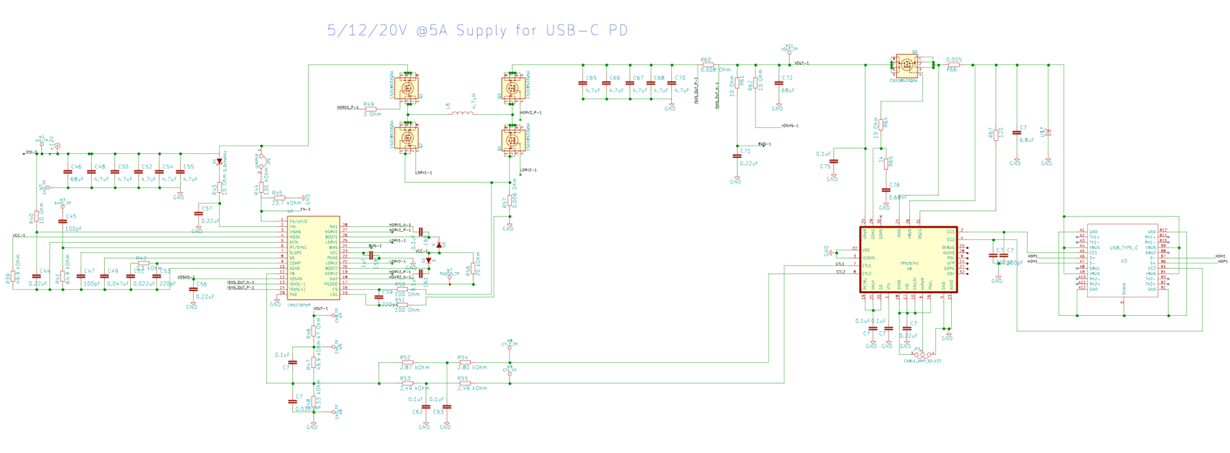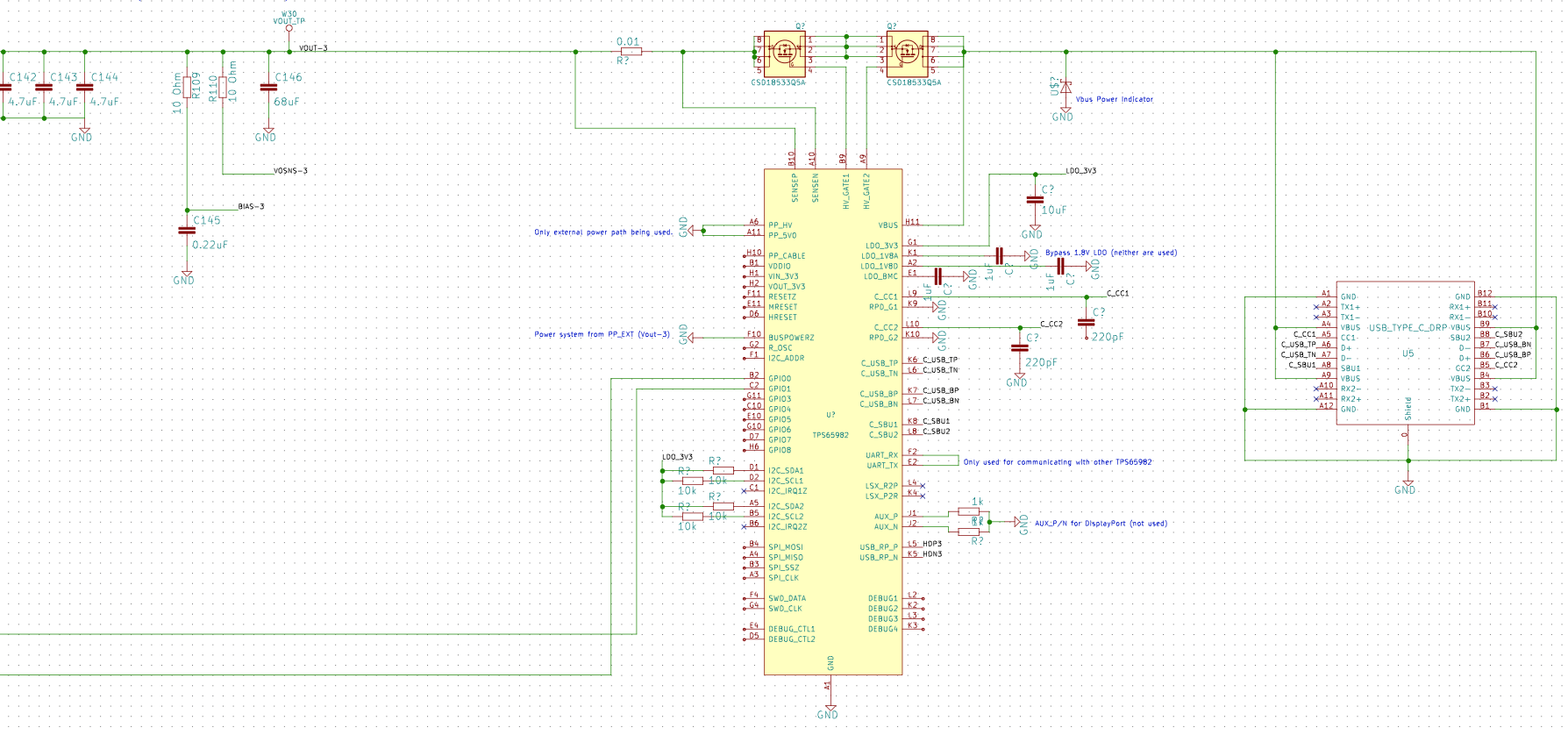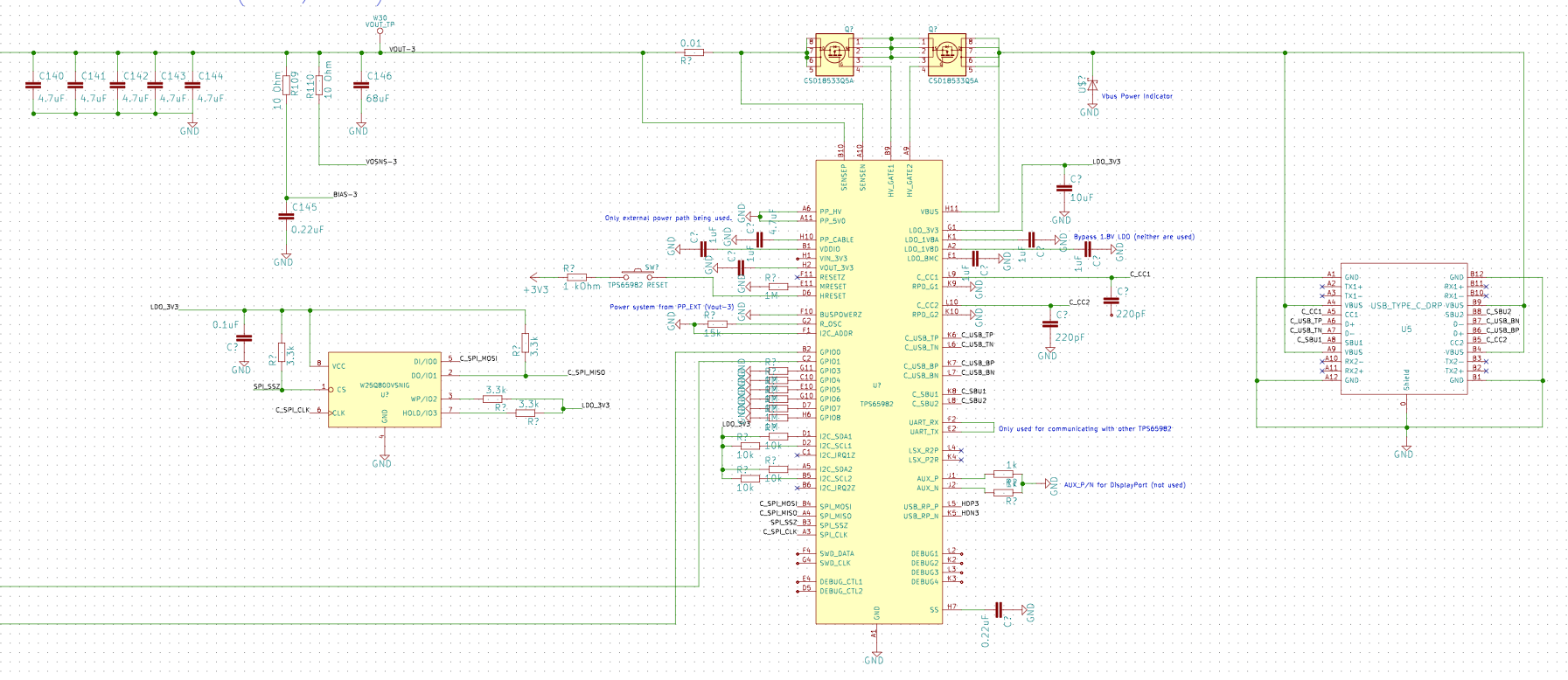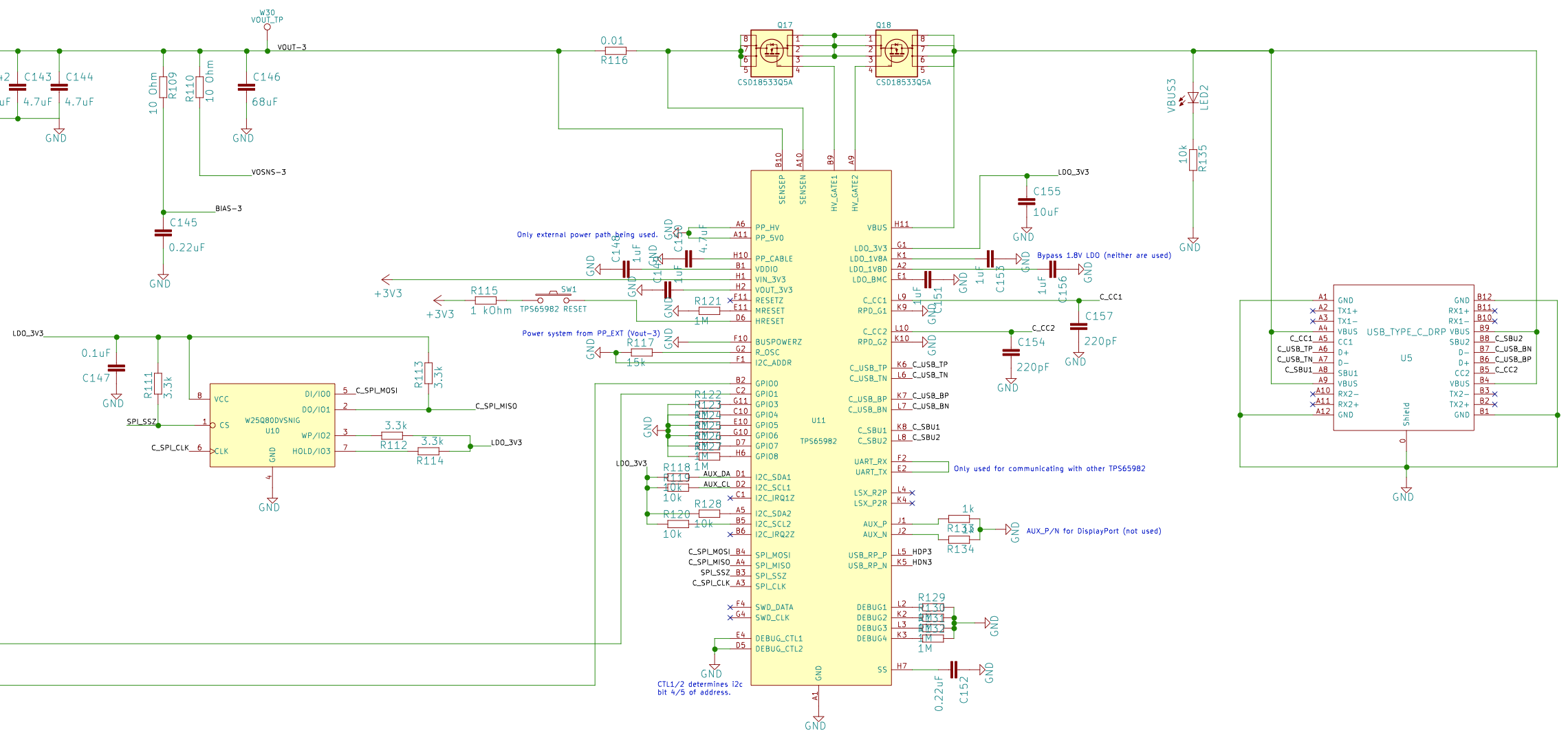Other Parts Discussed in Thread: PMP10698, , TPS65981, LM5175, , TS3USB30, TPS65982, TPS65982-EVM, TPS65986EVM, DP-EXPANSION-EVM, USB-CTM-MINIDK-EVM
Hi All,
I am new to USB-C design. I am currently designing a board that will do data transfer (max 480Mbps), and supply full power delivery (100W). I am using the PMP10698 reference design for my buck-boost converter to essentially provide 5/12/20V @5A.
The TPS25741 will use the CTRL1/2 lines to set the output voltage based on its negotiations. It explicitly says in the datasheet that it does not communicate with the cable to determine its type? My worry is someone will plugin a 3A usb-C cable and my device will attempt to put 5A through it. How can I check the cable type? Am I using the wrong USB-PD controller? I really like the ability to have one buck-boost design provide all 3 levels.
Thanks in advance,
Kai Rasporich








